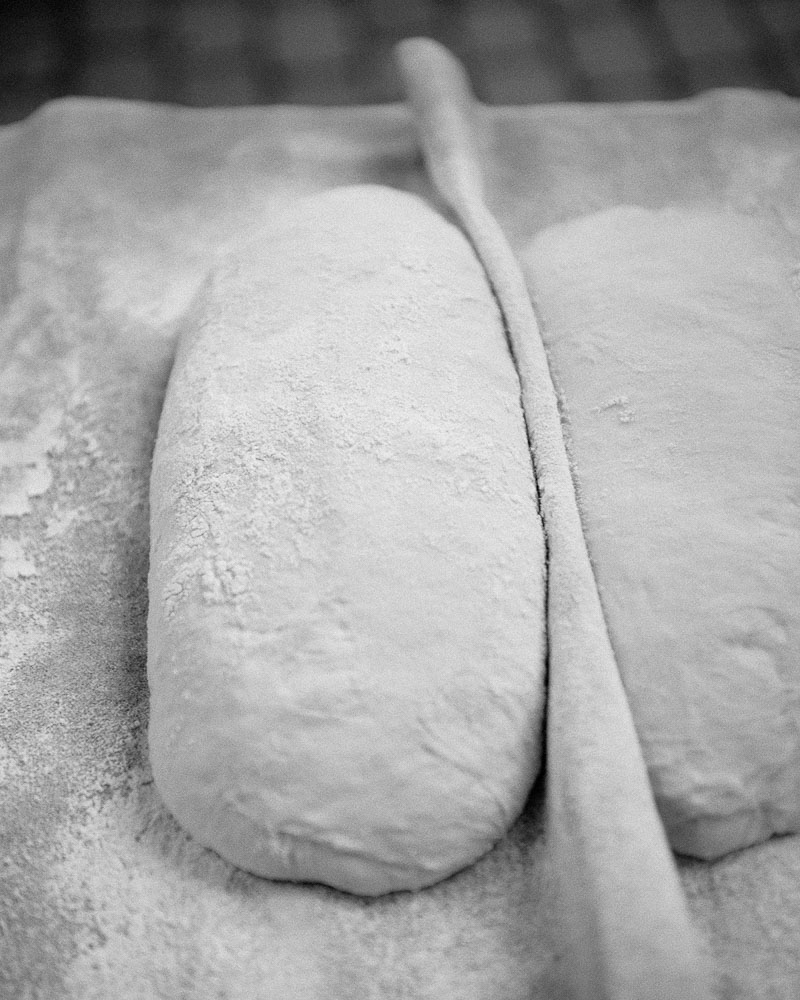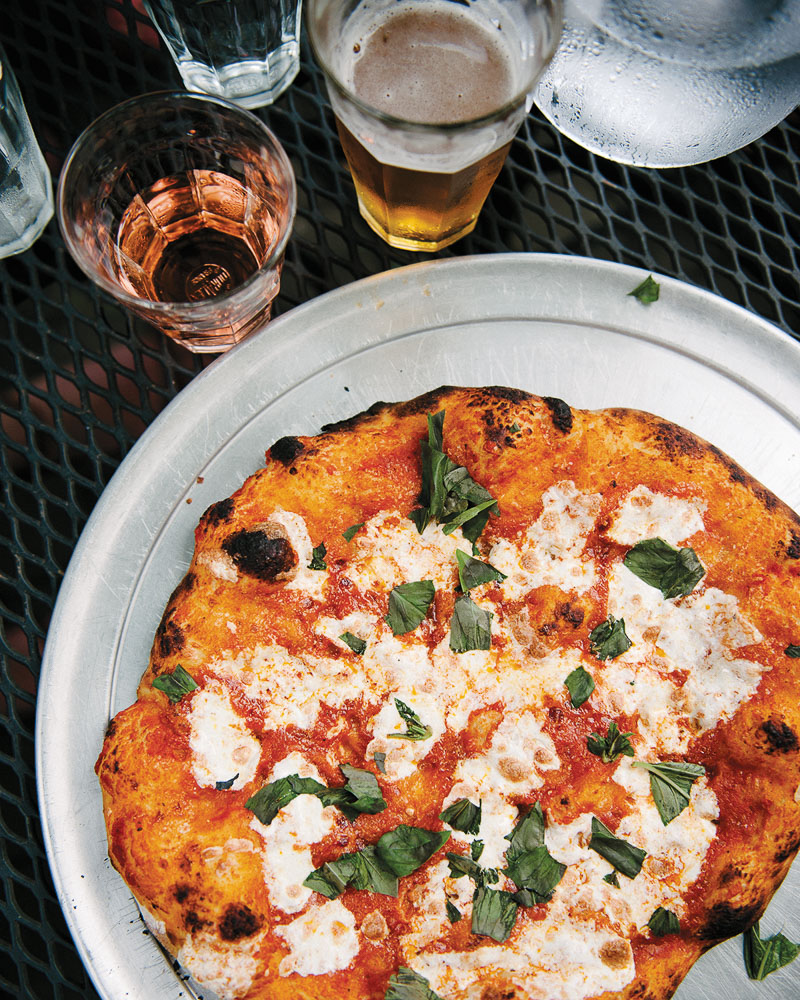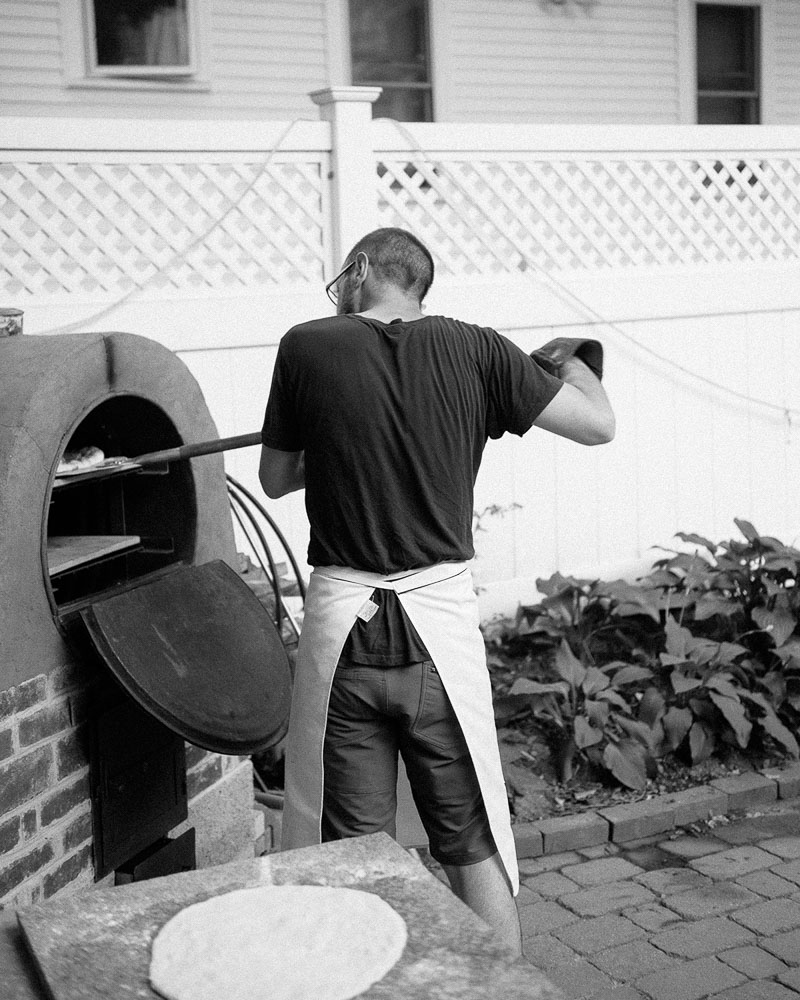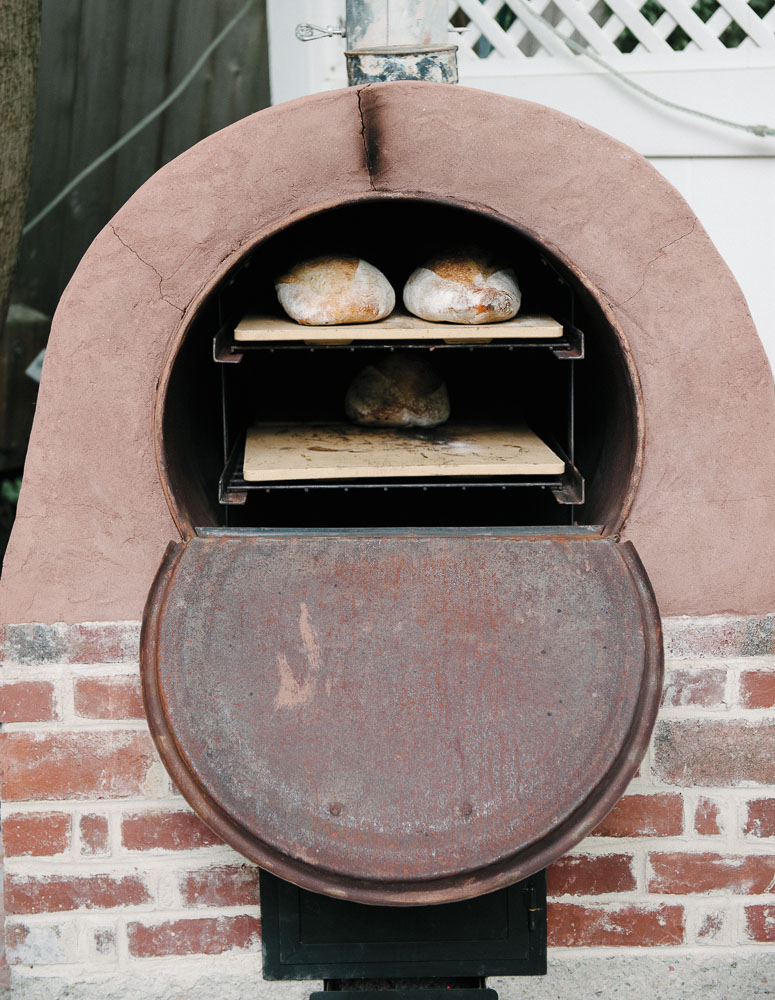From Beehive to Barrel: A Tale of Two Ovens
PHOTOS BY KATIE NOBLE
This is the story of our two bread ovens, the first one now gone, the second one still in use and a little more than a year old now. It started six years ago, when we built a modest clay beehive oven in the corner of our little Cambridge backyard. I’d fallen prey to a syndrome that eventually afflicts many of those who delve deeply into the world of home breadbaking: the burning need for a wood-fired oven in which to bake. I’d been teaching myself to bake bread for a few years, and finally convinced myself (and my somewhat more skeptical wife) that I could take my technique no further without an oven dedicated to the practice.
I needed something with more capacity, I told myself, an oven in which I could bake enough bread to really dig deep into the practice. I’d spent enough time hanging around bakers and bakeries to know that real skill and knowledge comes from repetition. You can learn only so much when you are limited to the one or two loaves that you can push through a standard size kitchen oven at a time. I had a handle on creating doughs and managing fermentation already, but subtle, refined techniques like shaping and scoring were best learned by repeated practice. Barring taking a job at a bakery, increasing my oven size was the obvious next step. In any case, I’d need a bigger oven if I was going to be able to supply all those neighbors, friends, and family who’d started asking me to provide loaves for their tables, too.
The energy savings would pay for the oven in no time, I argued. I could heat it entirely with scrap wood, much of it salvaged from construction sites or gathered from the woods nearby. And baking outdoors would mean the kitchen wouldn’t be a sauna for half the year. Plus, think of how pleasant it would be to cook and serve meals outdoors.
Oh, and best of all: think of the pizza I’d make! The best pizza is baked at temperatures nearly double the upper limit of even the best indoor ovens. I’d perfected my 500-degree pies, but I knew that there was another world of deliciousness awaiting once I could readily achieve mythic temperatures upwards of 1000 degrees. (I think that, in the end, it was the promise of amazing pizza that made the most convincing argument.)
After a year or so of mulling and planning, we built the beehive. It was what is commonly known as a “cob” oven: A dome-shaped shell made from loaf-shaped bricks of clay (“cob” is the old English word for loaf), with a hearth of firebricks sitting on a cinderblock base. It took a summer of weekends and free evenings to erect. We built the base, hearth, and arched door ourselves as free time allowed, gathered tools and materials, and then invited friends and family to help finish the oven over a single weekend. Some were enticed to assist by the novelty of the project, others by the promise of pizza parties and bread to follow.
We built a form on the brick hearth out of wet sand, smoothed with a board to define the negative space of the oven chamber and covered with a few layers of newspaper to hold it in place. Then our army of barefoot helpers took turns stomping clay, sand, and straw into a pliable mixture on an outspread tarp. (As when extracting juice from grapes to make wine, feet are the most efficient tools for the job.) Once mixed, the cob was formed into brick-like shapes and laid around the sand form in ascending rings until it met the arch and enclosed the dome. After the clay had set overnight, the sand was pulled out through the arch door, and the oven was complete. (It would still need a layer of insulation made of clay and perlite, and a decorative plaster, but it was functional nonetheless.) We built a small fire to christen it and begin the process of drying out the clay.
Within a month, we were holding regular pizza parties. Once the oven was insulated and fully dry, it was easy to crank it up to blazing hot temperatures. Pies that might take 10 minutes indoors were baked in 90 seconds in this one. And they were better than anyone—myself included—could have imagined: Crisp and charred on the bottom and edges, moist and just barely cooked within (this is the secret to great pizza—winning the race to get the exterior cooked before the inside overcooks).
Bread in the beehive was more of a challenge. With pizza, you built a fire, stoked it until the oven turned white-hot, then pushed it to one side to provide reflected heat to cook the top of the pie (like grilling or barbecuing, this is what is known as “live-fire” cooking). Bread, on the other hand, is baked indirectly; like charging a battery on a laptop or a cell phone, you fire the oven until there is enough heat stored in the walls and the hearth to heat the oven chamber and bake the bread. The fire is removed completely before the loaves go in.
I baked bread in the beehive oven, but not as much as I imagined I would when it was just an idea. Getting it hot enough to bake more than one loaf required hours of heating it. Unlike pizza parties where I could bake pies while holding court beside the oven, preparing it for baking was a more lonely and time-consuming business. And the bread itself required hours of attention, which meant that producing a few measly loaves could turn out to be an all-day affair.
Moreover, I soon learned that stored-heat ovens like our beehive (and most other wood-fired masonry ovens) aren’t the most practical choices for the occasional baker. They require a lot of fuel to heat up, and unless they are used day in, day out, much of the energy you pour into them is lost to the environment when it cools down after use. When used daily, they return to baking temperatures with a short top-off, and are efficient. When used occasionally, they are anything but.
Which is why after a few years of occasional baking (and many great pizza gatherings), I was intrigued to learn about the “barrel” oven. Beehive-shaped clay ovens are among the most ancient forms of baking devices, but the barrel oven was something entirely new. It was invented in Argentina about 20 years ago, when the collapse of the economy sent many Argentines in search of alternative forms of income and sustenance.
It has a clay shell like the cob oven, but within that sits a repurposed 55-gallon oil drum on its side, with a door on its face to provide access to its interior. The fire is built in a chamber that sits directly below the barrel; heat rises up and around the barrel (it flows through a 2-inch gap between the barrel and the exterior walls of the oven) and out a tall chimney above. The metal barrel (and its interior space) absorbs the heat of the fire very quickly, which means that—unlike a beehive oven—it can come up to baking temperatures in less than an hour. And since the fire burns outside of the oven space, it can be fired continuously during use.
All of which makes it more or less exactly like any standard kitchen oven: fire it up and it is ready to use after a brief heating up period, and it can be kept at cooking temperatures for as long as needed. Except that unlike most home ovens, it has two large shelves, each of which can hold two full sheet pans. Which means enough room to bake eight to 10 standard loaves at a time (giving it twice the capacity of the beehive oven).
All of this comes at a cost, however. The beehive was made from clay, which in theory can be dug up in one’s backyard if you have clay-rich soil; even when—as we city-dwellers did—you have to buy clay, the total cost for materials was only a few hundred dollars. The barrel oven requires purchasing a kit consisting of the barrel, door, shelves, and prefabricated firebox parts, which, with shipping from Firespeaking, the Oregon company that is producing them, runs about $1,200. So it’s not exactly cheap.
Still, it’s far less costly than most fancy brick masonry ovens, which can set you back $10-20,000. Once I grasped how much more efficient and spacious the barrel oven would be, it seemed inevitable that we would build one.
My kit arrived last spring (in 2013), and the summer build progressed much like the previous one. I spent a month or so getting my ducks in a row, and then took a week off from work to build it. I ceremoniously and somewhat emotionally dismantled the beehive oven (the parts and materials of which I recycled into the barrel oven), built the base, and then once again invited friends to help put it together. (This time around, I had two expert masons on my team, essential for a project requiring such precision brickwork.) The oven was mostly done by the time the week was out, and completely finished on the fourth of July, leaving plenty of summer in which to make use of it.
How has the upgrade been? Most of what the barrel oven promised, it has delivered. It does heat up in less than an hour, especially when using it at bread baking temperatures. And it uses far less wood than the beehive ever did. Pizza from the barrel oven is as good as it was from the beehive (though I miss baking them next to a live fire, which makes them easy to view when they bake, and cooks the cheese and toppings a little more quickly). We’ve used it to roast chicken and vegetables a few times, just as you would an indoor oven.
Bread is another story, but mostly because there’s a steeper learning curve. Heating the oven evenly and constantly over a long bake requires finesse (pizza is easy since you just pile on the wood and let it blaze). And I still haven’t sorted out the best way to steam the oven without losing heat to the atmosphere. But these are minor challenges, ones I look forward to sorting out as I continue to use it. I’m pretty sure that this is the last oven I’ll build for myself, at least for a long while, so I’ve got plenty of time.
---
Cob and Barrel Oven Resources
Build Your Own Earth Oven by Kiko Denzer Hand Print Press, 2007.
Build Your Own Barrel Oven by Eva and Max Edleson Hand Print Press, 2012.
From the Wood-Fired Oven: New and Traditional Techniques for Cooking and Baking with Fire by Richard Miscovich Chelsea Green, 2013.
Barrel Oven Kits firespeaking.com







